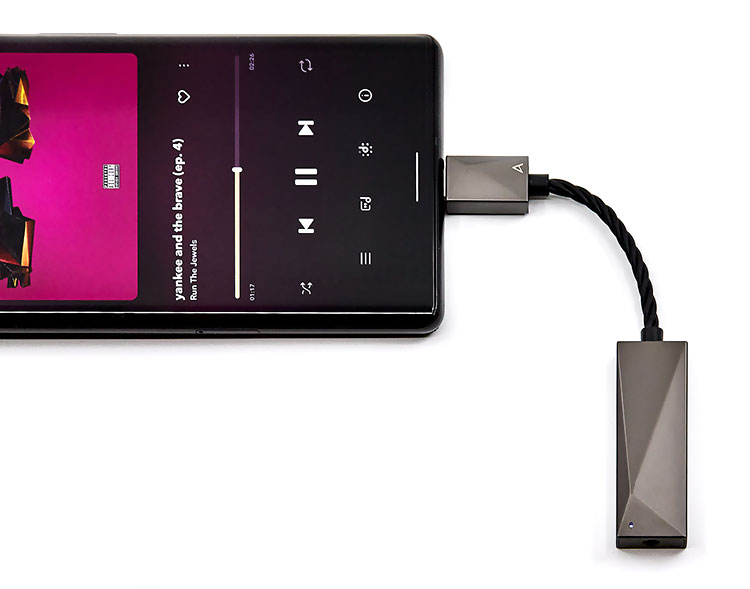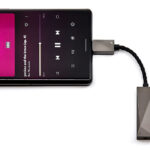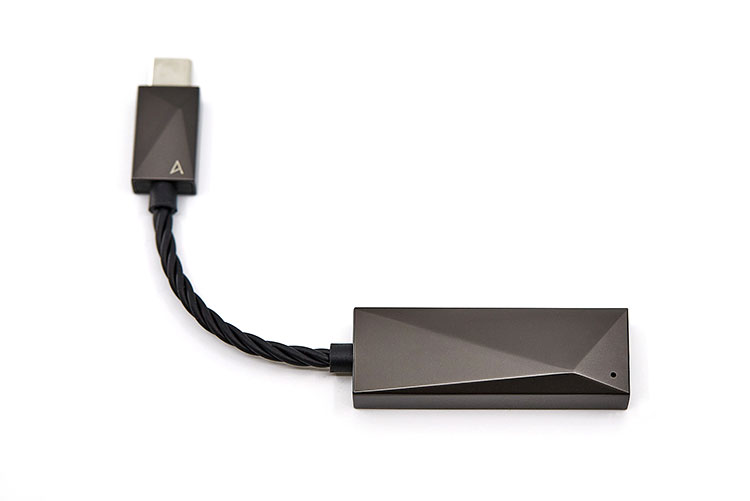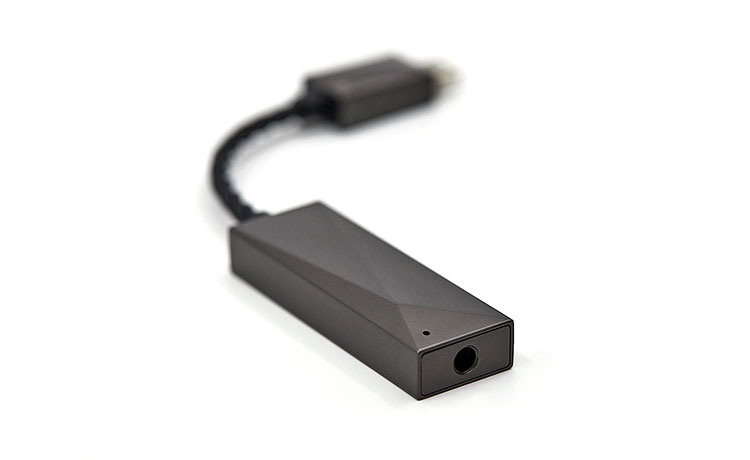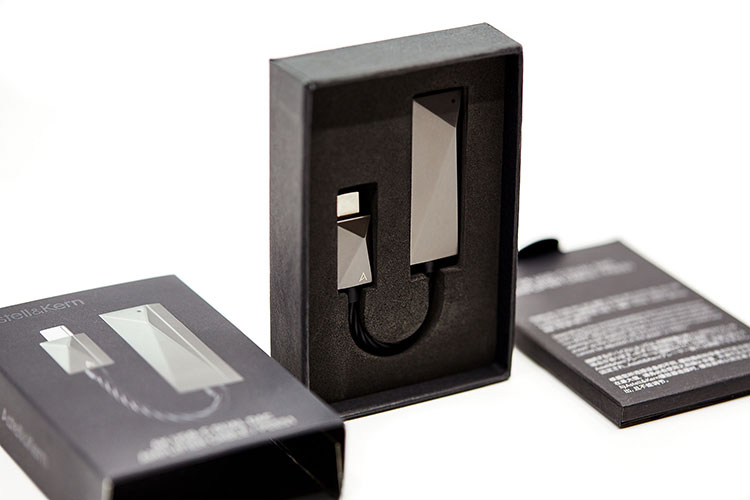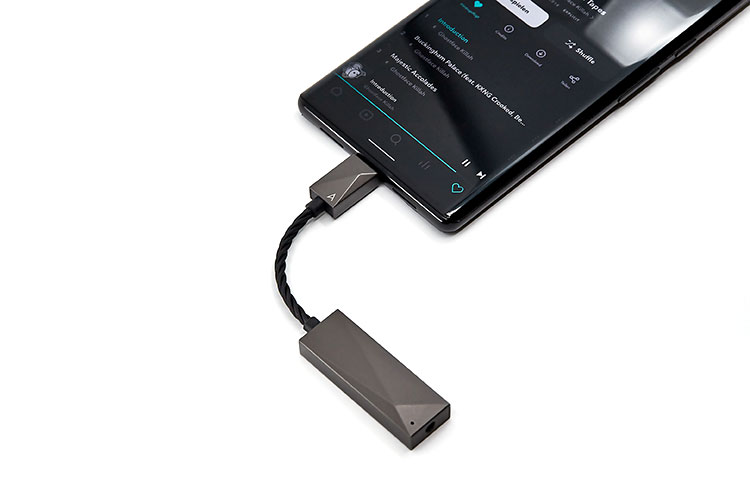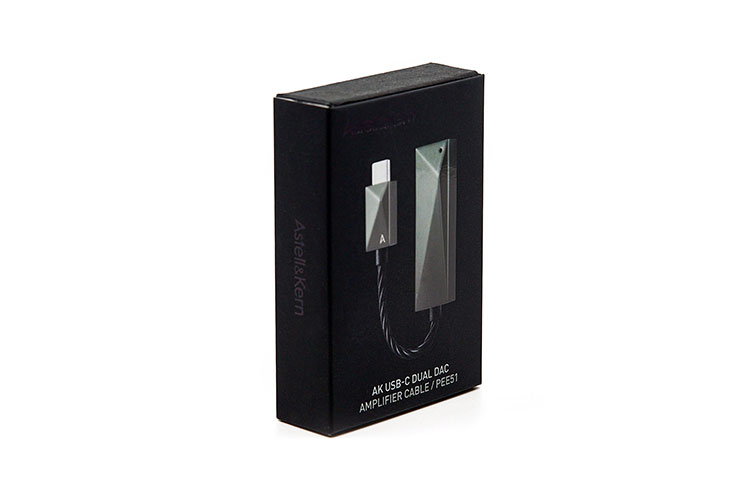This review covers the Astell&Kern USB-C Dual DAC Cable (PEE51), a dongle DAC/amp capable of supporting up to DSD256 and 32bit/384kHz playback. It is priced at $149.
Disclaimer: This was a purchased unit and does not have to be returned to the company. You can check the official Astell&Kern US website here.
To learn more about Astell&Kern products we have previously featured on Headfonics you can click here.
Note that this article follows our latest scoring guidelines which you can read up on here.
As we move into the world of smartphones and other small portable devices such as laptops and tablets, Astell&Kern has created the USB-C Dual DAC Amplifier Cable to ensure that music lovers and audiophiles continue to receive a high-quality output of their beloved music from their devices.
The popularity of USB-C DAC cables or dongles continues to soar given the current trend of manufacturers removing 3.5mm headphone jacks from their devices and the rise of music streaming apps supporting “Hi-Res” and lossless audio formats.
The Astell & Kern PEE51 is a compact USB-C DAC dongle that produces a sound quality that punches above its fiscal weight. With a suggested retail price of $149, it is one of the best value-for-money dongles currently available that I have tested.
If you are looking for a USB-C DAC Cable with premium quality sound or simply starting to enter the “dongle” world, the Astell&Kern USB-C Dual DAC Amplifier Cable is a good place to start.

Tech Highlights
DAC Architecture
Given its small form factor, the Astell&Kern PEE51 manages to squeeze a huge amount of technology into a very small space.
The dongle features two Cirrus Logic CS43198 MasterHIFI DACs and is capable of 32bit/384kHz playback and up to DSD256 support. The dedicated dual DACs are paired with an independent analog amplifier to provide high-quality audio output.
The diagram above shows the flow of audio signal being transmitted from the dual DAC architecture, into the amplifier which is then finally received by the headphones:
Power
The Astell&Kern PEE51 has an output impedance of 2Ω and output power or voltage of 2Vrms or 80mW. During testing, the power output from the dongle had no issues driving IEMs with a hybrid, balanced armature, dynamic driver configurations, and even planar-based IEMs.
Conversely, the dongle does not draw a lot of power from its source (e.g. a mobile phone) and does not overheat while in use. The dongle does get warm to touch but nothing too dramatic which would make it difficult to use whilst it is plugged into a device.
Design
Form Factor
Overall, the Astell&Kern PEE51 is a premium feeling dongle that is ultra-portable and compact. It is one of the more portable dongles currently available on the market making it perfect to use on the go.
It features a dark grey “titan” color and Zinc alloy finish giving it a classy and stealthy appearance. However, because of its metal nature, this makes the dongle subject to large amounts of scratches which are compounded by the fact that no case or cover is included in the packaging.
An extra level of care is needed when storing and transporting the dongle to avoid it rubbing against other metal objects such as adapters, cable plugs, and even coins or keys if you decide to store it in your pocket.
At the top of the dongle, there is a USB-C connector which is attached by a noise-shielded, silver-plated copper wire to the main body of the DAC and amplifier. The cable which connects the USB-C connector to the DAC module has a very soft and rubber-like texture and measures around 6cm long.
As the cable is soft, it makes it very easy to bend and convenient to use. The main body of the dongle measures 5cm x 2cm x 0.5 cm and given that it weighs only 25 grams, it makes it one of the most portable dongles out there.
I/O & Controls
The Astell&Kern dongle features a USB-C connector which allows you to connect it to most electronic devices. The dongle is compatible with most Windows 10 (and above), macOS, and Android-based devices. However, it is not compatible with iPhones or devices with iOS built-in.
Given the Astell&Kern PEE51’s ultra-slim profile, this comes with both its advantages and disadvantages in relation to I/O and controls.
Pros
On one hand, the goal of Astell&Kern was to create a fully portable dongle that allowed everyday users to experience premium high-quality music on the go with zero fuss. The plug-and-play nature of it makes it handy and easy for anyone to use – music lovers and audiophiles alike.
Cons
On the other hand, this has also restricted the number of settings and options which are currently present on other dongles within the market. The dongle includes a 3.5mm output only for single-ended output. There is no input mode or microphone line available.
Although this supports the plug-and-play nature of the dongle mentioned earlier, it feels like a missed opportunity from Astell&Kern to really make a statement with their first USB-C DAC/Amp dongle. Instead, it would have been preferable to have balanced output either in a 2.5mm or 4.4mm mode to give listeners the choice between single-ended and balanced modes.
No Button Control
Adding to this, the dongle does not include any physical buttons to allow for independent control. As a result, the dongle does not feature independent settings such as standalone volume levels and high/low gain options.
Furthermore, the dongle does not include a screen which means that you cannot view any information about the music being played such as playback quality and volume.
However one must also take into account the price of this dongle which sits at $149. Compared to other players in the market where prices for dongles go up to $300, the Astell&Kern PEE51 still represents fantastic price/performance value despite its lack of features.
Packaging & Accessories
The Astell&Kern PEE51 comes in a small black box with a smooth textured finish. Just like the dongle itself, the box and its contents are compact and simple.
Inside the box, you will find the USB-C DAC/Amp dongle itself, warranty card, and instructions manual. Unfortunately, there is no case included which would have been useful to prevent scratching against the unit given its metal nature.
Sound Impressions
The Astell&Kern USB-C Dual DAC Cable is a neutral source dongle that is capable of producing a sound that is natural and highly resolving.
The dongle aims to have a clean and transparent tonality without including any distortion to the music being played or to the headphones. To my ears, the Astell&Kern PEE51 produces a rich and premium quality sound in such a small and compact form factor.
Bass
The sub-bass extends deep and is capable of producing more than enough rumble when called upon. Within the bass frequency department, there is a lot of boom and power however bass texture is adequate.
This is because the bass decay and roll-off are not as fast as it needs to be. The attack and speed of bass notes may come off as slow to some listeners. As a result, the bass feels too boomy with an average level of detail.
This is not to say that the overall bass response is unsatisfactory, as a matter a fact it is actually very good, however, compared to the other sound frequencies, it could have been implemented with more finesse.
Mids
The mid-range is the star of the show and is effortlessly presented with a high level of detail and precision. Male and female vocals have a natural-sounding tonality behind them with enough volume to carry them to the forefront of the sound frequency.
Instruments have a high level of detail and it is easy to pick out the finer details within them. The sound of guitars and violins being strung is presented with such finesse and in an effortless way that is highly appealing to any listener. The attack and speed of the notes are fantastic and result in a near-perfect presentation of live instruments.
Treble
Treble is presented as neutral sounding and is not too bright or dark. Towards the upper treble frequencies, it is well controlled with just enough amount of clarity. Treble detail and texturing are adequate and provide a good basis for the overall sound. There is no sense of harshness or sibilance giving it an overall natural sound.
Staging
The soundstage is average and tends to lean more towards an intimate setting where width and height are narrow. Its width is more pronounced compared to soundstage height where the overall sound feels wider than it is tall.
As a result of this, the intimate setting may suit some listeners as it brings out the best of the mid-range and vocal and instrumental clarity. On the other hand, the lack of height may be a drawback as it impacts the overall imaging and layering of the mid-range.
With this in mind, imaging and layering of the sound are presented with enough detail to allow you to easily locate where vocals and instruments are placed.
Synergy
Efficiency
During testing, switching between hybrid IEMs with both balanced armatures and dynamic drivers and planar-based IEMs did not result in any background noise.
Furthermore, there was no hissing whilst the dongle was in use. Furthermore, the cable connecting the dongle to the mobile device performed well as canceling out any unwanted effects from electromagnetic interference (EMI).
Power
The Astell&Kern PEE51 dongle produces 2Vrms or 80 mW of power output which is sufficient enough to drive most IEMs.
During testing, IEMs such as the Empire Ears ODIN, Empire Ears Legend EVO, Xenns Mangird Tea2, and the Kinera Imperial Nanna 2.0 were used. All IEMs were driven with ease including the Kinera Imperial Nanna 2.0 which has a high impedance rating of 60Ω.
The Astell&Kern PEE51 dongle performs better when connected to a source that has more power housed within it. For example, there is a noticeable difference in sound quality and raw output when the dongle is connected to a computer or laptop than a smartphone. As such, it is important to use the correct source when you want to experience the dongle’s full potential.
Pairings
The Astell&Kern PEE51 pairs well with most IEMs given it is a neutral source and will not distort any sound or music which is given to it.
It works particularly well with IEMs which have a mid focussed and bright sound signatures such as the Empire Ears Odin and Xenns Mangird Tea2. The Astell&Kern PEE51 performs exquisitely to bring out the best of these IEMs as it excels in providing a high level of detail and resolution to the mid-range.
Select Comparisons
Cayin RU6 Dongle
$250
Technical
The most notable difference between the two dongles is that the Cayin RU6 features a 24bit R-2R discreet DAC compared to the Astell&Kern PEE51’s dual Cirrus Logic CS43198 chips. Under 4.4mm line out mode, power output is much higher on the Cayin RU6 at 213mW coupled with a lower output impedance of 1Ω.
Design
The Cayin RU6 is built differently from the Astell&Kern PEE51 due to the implementation of the R-2R discreet DAC and to house additional features such as 4.4mm and 3.5mm line out, small display screen, and physical side buttons for volume control, high/low gain, no oversampling and oversampling and display settings.
As a result, the Cayin RU6 is slightly heavier, much longer, wider, and taller than the Astell&Kern PEE51 dongle. There is also the possibility to purchase a case for the Cayin RU6 which makes it useful for bringing it with you on the go and avoiding unwanted scratches.
Performance
The Cayin RU6 produces a more “analog sound” compared to the Astell&Kern PEE51 where there is a slightly warmer timbre from the Cayin RU6.
Sub-bass between the two dongles are similar in terms of extension and rumble however in terms of mid-bass here is where the two differ. The Cayin RU6’s mid-bass has better texture, more punch, and is not as slow to decay.
Both dongles produce a great mid-range resolution. However, the Cayin RU6 edges the Astell&Kern PEE51 in overall quality, especially in relation to vocal clarity and instrumental texturing.
The treble on the Cayin RU6 is brighter compared to the Astell&Kern PEE51 which gives the Cayin RU6 a more energetic sound signature. The Cayin RU6’s soundstage is both wider and taller than the Astell&Kern PEE51. You obtain a better sense of depth and height which results in better imaging and layering of instruments and vocals.
The abovementioned sound differences in the Cayin RU6 can be attributed to the fact that the Cayin RU6 features additional sound settings such as high/low gain and no oversampling versus oversampling modes.
Luxury & Precision W2
$300
Technical
The Luxury & Precision W2 has a similar DAC/Amp architecture to the Astell&Kern PEE51 in the sense that it features two Cirrus Logic CS43198 DAC chips. The Luxury & Precision W2 has a higher power output at 230mW.
Design
The Luxury & Precision W2 dongle is larger than the Astell&Kern PEE51 as it includes additional features such as a small screen, 4.4mm and 3.5mm line out, volume, and physical buttons. Both dongles have a stealthy appearance with the Luxury & Precision W2 featuring a carbon fiber texture on the back. A separate carrying case is also available for the W2.
Performance
The sound performance of the Astell&Kern PEE51 and Luxury & Precision W2 dongles are quite different despite being based on the same Cirrus Logic CS43198 DAC chips. There are noticeable sonic differences between the two of them and the determination of which one is better lies within one’s own tonal preferences.
Sub-bass on the Astell&Kern PEE51 digs deeper and extends further with more rumble. The sub-bass on the Luxury & Precision W2 is less prominent and sits further back in the overall sound signature.
Mid-bass is boomier and has a slower roll-off on the Astell&Kern PEE51 whereas it is punchier and faster on the Luxury & Precision W2. Midbass texture is very similar between the two with no significant difference.
Mids are presented in a more forward fashion on the Astell&Kern PEE51 with a higher level of detail and resolution. In particular, the upper mid-range seems more pronounced on the Astell&Kern PEE51 whereas the Luxury & Precision W2 seems to present this differently with less fullness.
The treble between the two dongles is neutral and is presented similarly. The soundstage on the Luxury & Precision W2 is wider however soundstage height is similar. The imaging and layering performance is similar between the two.
Our Verdict
The Astell&Kern USB-C DAC/Amp Cable (PEE51) offers a highly resolving and overall premium-quality sound in a small and compact form factor. Priced at $149, the Astell&Kern PEE51 competes with the more expensive dongles on the market which have more features and audio enhancements. It is a fine example of a great price/performance.
For users who demand high-quality music on the go or are willing to explore the world of dongles, then an Astell&Kern PEE51 dongle is a good place anyone would want to find themselves in.
Astell&Kern USB-C Dual DAC Cable (PEE51) Specifications
- DAC Two Cirrus Logic CS43198
- Sample Rate PCM: support up to 32 bit/384 kHz / DSD native: DSD64 (1 bit 2.8 MHz), stereo / DSD128 (1 bit 2.8 MHz), stereo / DSD256 (1 bit 11.2 MHz), stereo
- Input USB-C (Android, Windows, Mac OS)
- Output 3.5 mm headphone
- Output Impedance 2Ω
- Frequency Response 0.030 (condition: 20 – 20,0000 Hz)
- S/N Ratio 118 dB @ 1 kHz unbalanced
- THD+N 0.0004 % @ 1 kHz
- IMD SMPTE 0.0003 % 800 Hz (4.1) unbalanced
- Output Power 2 Vrms (without load)

